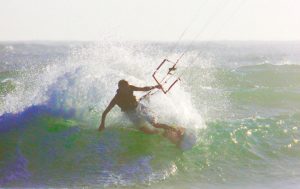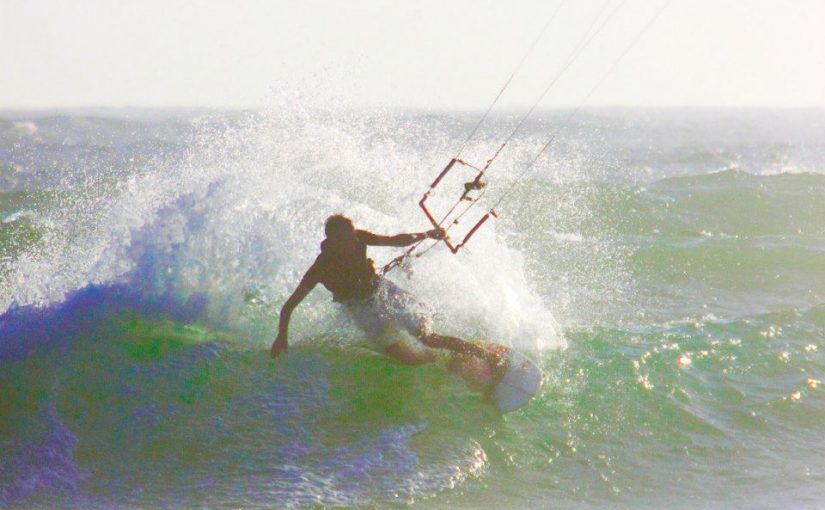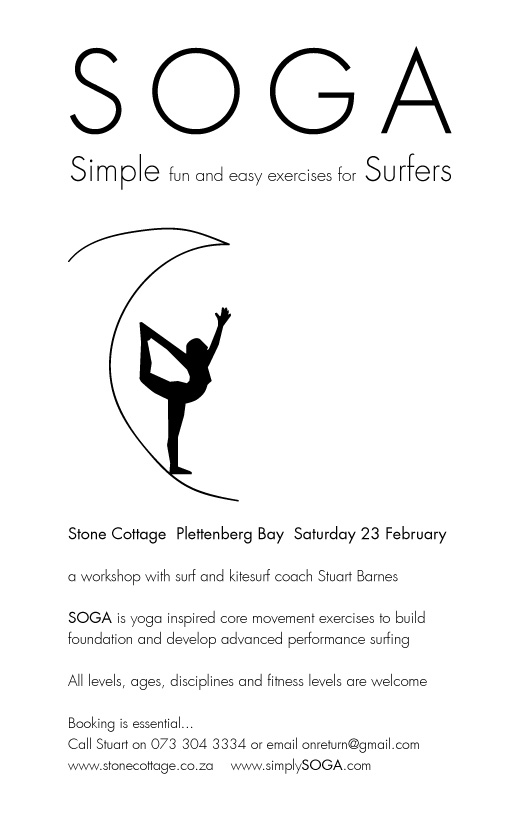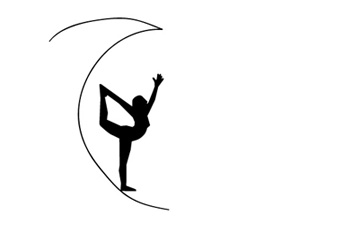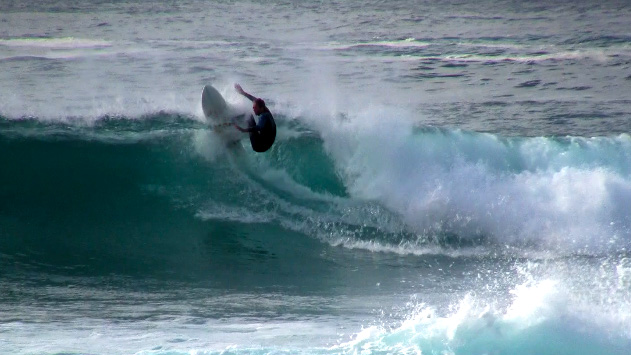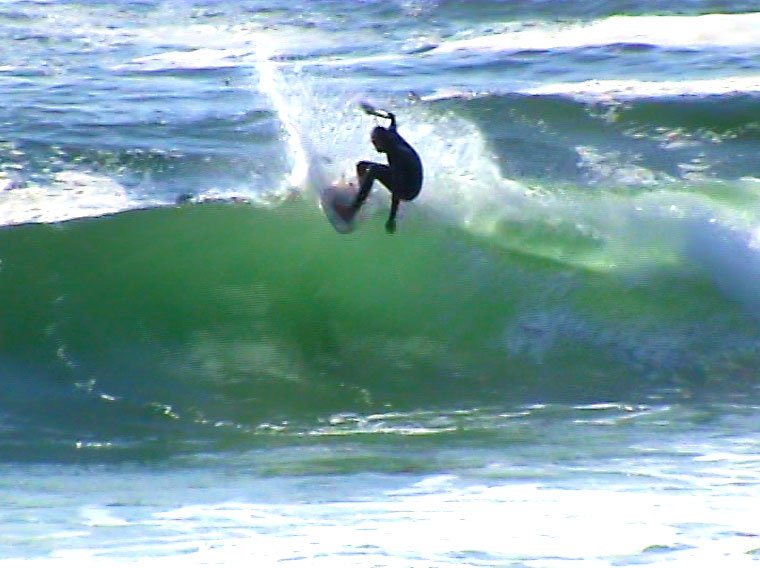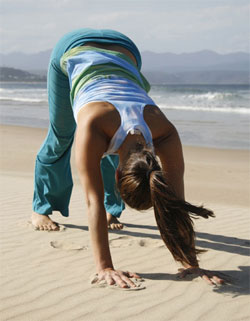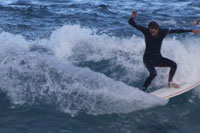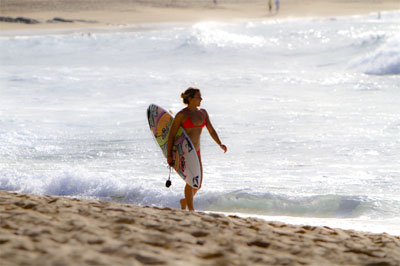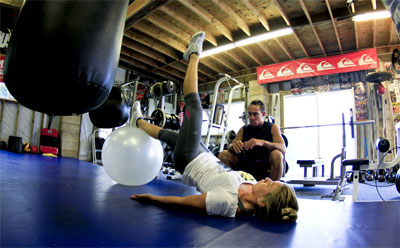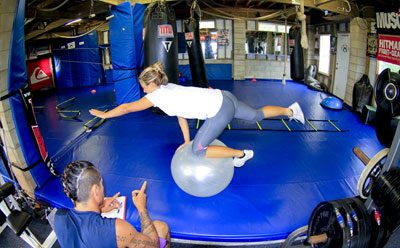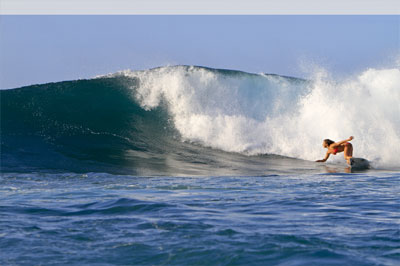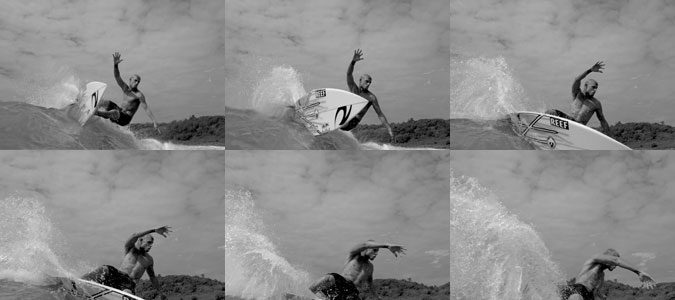
Mick Fanning breaks down the frontside gouge in 5 steps:
1. The Bottom Turn
“Like most maneuvers, a good frontside arc begins with a solid bottom turn. You want to have some speed going into the turn to do it properly. When I’m driving down the line, I like to have my back foot at the top of the tail pad, but when I begin my turn, I place my foot farther back on the board, almost over the back fin. By placing your foot that far back, near the smallest width of your tail, you’re able to pivot your board a lot more. You’ll want to explode off the bottom, but as you approach your turn, take your foot off the gas a little, it’ll allow you an opportunity to set up your move.”
2. Keep Your Chest Open, Head Up
“As you approach the section of the wave where you want to do your turn, you’ll need to transition your weight off of your front foot and onto your back foot. From there, you can begin moving the pressure from your toes to your heels. This is where it gets a little tricky and most people make mistakes. From the moment you start your turn until you finish it, it’s really important to keep your chest open and your head up. You’ll need to do that to create drive throughout the turn. I think that’s the number-one mistake most people make. You’ve gotta keep your chest open and your head up.”
3. Turn Off Your Back Foot
“How you actually execute your turn depends on the type of turn you’re looking to do. If you’re looking to do a short, in-the-pocket turn, you’ll need to put most of your weight on your back foot. For a turn like this, you’ll also want to get your front arm out of the way as soon as you begin your turn. Try and put your arm behind you quickly and turn through your core. This will help initiate your turn.”
4. Open Up Your Arms
“If you’re looking to do a more drawn-out arc, you can place a little more pressure on your front foot throughout the turn. You’ll also want to do something different with your front arm than you would with a shorter turn. You’ll want to open up your palm on your front hand and lead with it a bit. Think of it like you’re ushering someone through a door. That will allow you to lengthen the carve more. Remember, keep your chest open and your head up.”
5. Don’t Squat
“As you come out of the turn, keep in mind that you don’t need to be that low. I think that’s a pretty common misconception. You want to have some bend in your knees, somewhere between 90 degrees and standing straight up, but you don’t need to be squatting over your board. That’ll make it a lot harder to transition into your next maneuver.”
